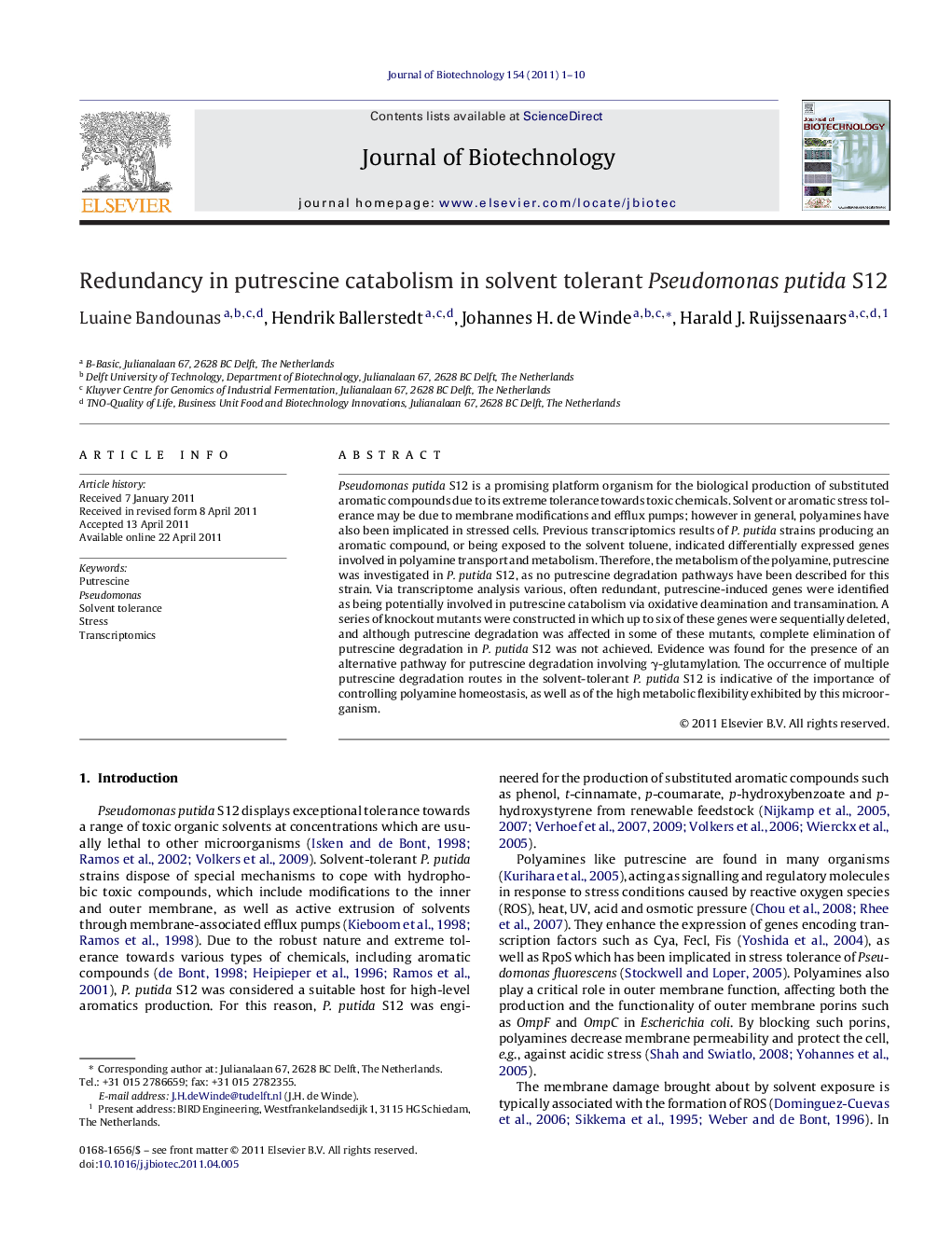| Article ID | Journal | Published Year | Pages | File Type |
|---|---|---|---|---|
| 23759 | Journal of Biotechnology | 2011 | 10 Pages |
Pseudomonas putida S12 is a promising platform organism for the biological production of substituted aromatic compounds due to its extreme tolerance towards toxic chemicals. Solvent or aromatic stress tolerance may be due to membrane modifications and efflux pumps; however in general, polyamines have also been implicated in stressed cells. Previous transcriptomics results of P. putida strains producing an aromatic compound, or being exposed to the solvent toluene, indicated differentially expressed genes involved in polyamine transport and metabolism. Therefore, the metabolism of the polyamine, putrescine was investigated in P. putida S12, as no putrescine degradation pathways have been described for this strain. Via transcriptome analysis various, often redundant, putrescine-induced genes were identified as being potentially involved in putrescine catabolism via oxidative deamination and transamination. A series of knockout mutants were constructed in which up to six of these genes were sequentially deleted, and although putrescine degradation was affected in some of these mutants, complete elimination of putrescine degradation in P. putida S12 was not achieved. Evidence was found for the presence of an alternative pathway for putrescine degradation involving γ-glutamylation. The occurrence of multiple putrescine degradation routes in the solvent-tolerant P. putida S12 is indicative of the importance of controlling polyamine homeostasis, as well as of the high metabolic flexibility exhibited by this microorganism.
